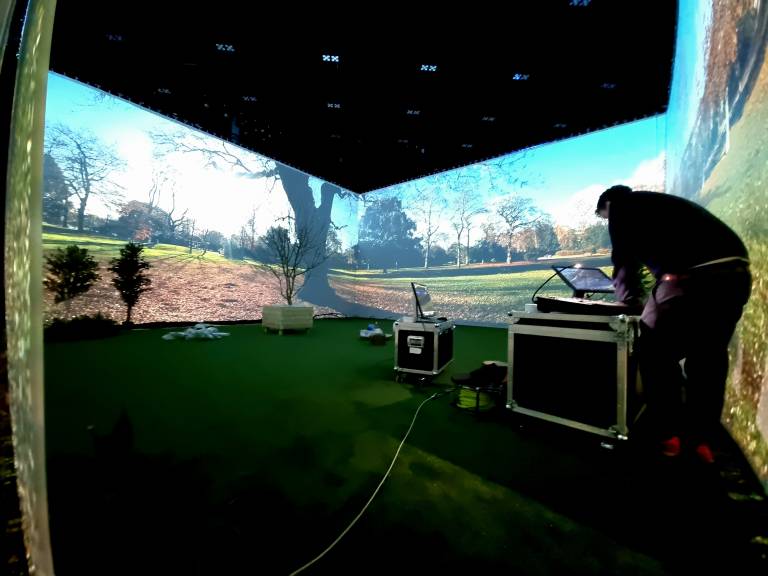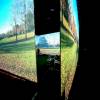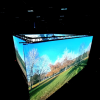How urban greenspaces may benefit and improve the lives of neurodiverse children
7 March 2022
PhD student, Alister Baird discusses the recent REGEN Project in collaboration with UCL’s new Person-Environment-Activity-Research-Laboratory (PEARL)

Tell us about your PhD and your role in the project
My interdisciplinary PhD draws expertise from psychiatry, ecology, and engineering to explore how our physical environment (everything from air pollution to building design) influences behaviour. For the final stage of this project, we have collaborated with technical staff from UCLs newly built Person-Environment-Activity-Research-Laboratory (PEARL) to explore how urban nature influences behaviour in neurodiverse children. My role has been to design and orchestrate the implementation of this REGEN (Reactive environmental greenspace exposure in neurodevelopmental disorders) project, working with a team to simulate a real-world urban greenspace (park) inside of this environmental research laboratory.
Why did you get involved in this research project?
What appealed to me about this research is the potential to increase our understanding of how our immediate environment affects us and mediates our behaviours. By understanding these influences better, we can create environments that make tangible differences to individuals’ lives, and there is no more prescient need for this than in vulnerable populations.
This project includes children with intellectual and learning disabilities, populations neglected in environmental research. Whilst previous literature has shown the benefits of nature exposure on emotional, behavioural, and cognitive wellbeing in neurotypical children, little research has explored this in neurodiverse individuals. How nature provides these therapeutic benefits is still debated, with theories attributing this to potential stress reducing effects of greenspaces, either; by protecting them from harmful environmental stressors (noise / air pollution for example), by restoring attentional resources, or via some other currently unknown mechanism.
This project aims to uncover which aspects of urban nature provide these benefits, by individually manipulating them inside of the PEARL laboratory. This space allows us to control the various aspects of the environment to a high specificity. By isolating individual environmental stimuli in this way, we aim to highlight which elements of natural environments are most salient in conveying potential benefits.
What real life impact do you hope this research project will have?
This is an initial proof-of-principal experiment to explore the feasibility of replicating a real-world urban park space inside of PEARL, something that to the best of our knowledge has not been done previously. The results of this work will help us to understand how urban greenspaces may benefit neurodiverse children. With additional research, this may translate into real world policy and design changes for residential environments and therapeutics for these children. This may also have implications for how we design cities and urban environments and how elements of nature are integrated into these design decisions.
What’s next for this project?
We are currently in the data collection stage for this research, collaborating with East London special educational needs schools to facilitate children participating in this study. Once we have finished and analysed our data, we can use this to develop additional novel research, with the goal or translating this into testable interventions that may provide concrete improvements in the lives and well-being of neurodiverse children.
For any additional information or queries please contact: alister.baird.19@ucl.ac.uk
Links
- Person Environment Activity Research Laboratory (PEARL) website
- PEARL Twitter
- REGEN Twitter
- Alister Baird Twitter
 Close
Close




